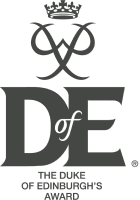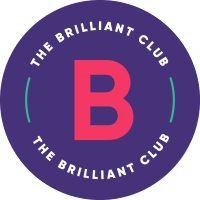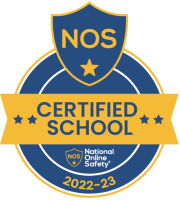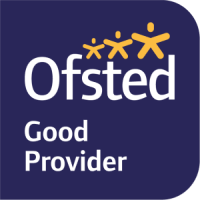This subject is part of the Faculty of Mathematics, Enterprise and Computing
Our Head of Faculty is
Mr J Pridden jpridden@tcat.school
Our subject teachers and email are
Mrs Mags Watkiss mwatkiss@tcat.school
Our subject intent
Is to prepare pupils for the next stage in their learning and life. Which, for many of our more able pupils will be continuing into further education to complete level 3 or A-Levels courses. To support our learners along their journey, the GCSE Statistics content is delivered alongside GCSE Mathematics. This enables the learners to broaden their knowledge in a key component of maths that is relevant to everyday life. They develop transferable skills which are applicable to a range of other subjects.
Curriculum Subject Offer
Year 10 Statistics
Subject intent
Our intent is to prepare students for the next stage in their learning and life. Which, for many of our more able students will be continuing into further education to complete level 3 or A-Levels courses. To support our learners along their journey, the GCSE Statistics content is delivered alongside GCSE Mathematics. This enables the learners to broaden their knowledge in a key component of maths that is relevant to everyday life. They develop transferable skills which are applicable to a range of other subjects.
During year 10 you will learn what statistics is and the significance of it the real world around us. You will learn the terminology used to represent types of variables and data, look at different methods for collecting data and how to represent and interpret your findings.
Topic Breakdown
|
Half term 1 |
Half term 2 |
|
|
Autumn |
Data collection | Representing discrete data |
|
Spring |
Averages | Representing continuous data 1 ~ Cumulative frequency |
|
Summer |
Representing continuous data 2 ~ Histograms | Revision for mocks |
You will be assessed at the end of every term by a formal assessment
Statistics full Scheme of Work - Year 10
Year 11 Statistics
Subject intent
Our intent is to prepare students for the next stage in their learning and life. Which, for many of our more able students will be continuing into further education to complete level 3 or A-Levels courses. To support our learners along their journey, the GCSE Statistics content is delivered alongside GCSE Mathematics. This enables the learners to broaden their knowledge in a key component of maths that is relevant to everyday life. They develop transferable skills which are applicable to a range of other subjects.
During year 10 you learnt what statistics is and the significance of it the real world around us. You will know the different methods for sampling and how to represent data using simple graphs and diagrams (majority of which are also in GCSE Mathematics) and how to calculate averages of frequency tables.
During year 11 you will continue looking at methods for representing data, as well as focusing on probability and social and economic statistics.
Topic Breakdown
|
Half term 1 |
Half term 2 |
|
|
Autumn |
Time series | Probability 1 |
|
Spring |
Probability 2 | Social statistics & Distributions |
| Summer | Revision |
You will be assessed at the end of every term by a formal assessment
Statistics full Scheme of Work - Year 11
Within each subject we have our own specific personalised marking and feeback policy.
|
Faculty: Maths and ICT |
|||
|
|
KS3 ~ Maths |
KS4 ~ Maths |
ICT |
|
Verbal dialogue |
Teachers circulate with purpose, checking pupils’ work, marking if appropriate and collecting information on whole-class strengths, errors, misconceptions, knowledge gaps etc. The teacher adjusts their lesson accordingly. |
Teachers circulate with purpose, checking pupils’ work, marking if appropriate and collecting information on whole-class strengths, errors, misconceptions, knowledge gaps etc. The teacher adjusts their lesson accordingly. |
Teachers circulate with purpose, checking pupils’ work, marking if appropriate and collecting information on whole-class strengths, errors, misconceptions, knowledge gaps etc. The teacher adjusts their lesson accordingly. |
|
Self/peer assessment |
During lessons, pupils mark their own work, by either the class teacher reading out the answer or using the answers in the back of the text books. Pupils provide written feedback through strengths/targets and annotations, as appropriate (not needed every lesson). Peer and self-assessment should be completed in blue pen. |
During lessons, pupils mark their own work, by either the class teacher reading out the answer or using the answers in the back of the text books. Pupils provide written feedback through strengths/targets and annotations, as appropriate (not needed every lesson). Peer and self-assessment should be completed in blue pen. |
During lessons pupils will review their own and peers work to make relevant points on how to improve their work. Pupils provide written feedback through strengths/targets and annotations, as appropriate (not needed every lesson). Peer and self-assessment should be completed in blue pen. |
|
Whole Class Feedback |
When pupils have completed a unit of work, books will be collected in and the class teacher will look through the work covered during that topic and make notes on the pupils’ strengths and areas for development. Teachers are not expected to make any comments in the pupil’s books. Teachers will then use this information to provide whole class feedback on what pupils are doing well and how pupils can improve their work further. This will be delivered to the whole class at the start of the next lesson. Evidence of whole class feedback will be in pupils exercise book, written in blue pen. |
When pupils have completed a unit of work, books will be collected in and the class teacher will look through the work covered during that topic and make notes on the pupils’ strengths and areas for development. Teachers are not expected to make any comments in the pupil’s books. Teachers will then use this information to provide whole class feedback on what pupils are doing well and how pupils can improve their work further. This will be delivered to the whole class at the start of the next lesson. Evidence of whole class feedback will be in pupils exercise book, written in blue pen. |
When pupils have completed a unit of work, books will be collected in and the class teacher will look through the work covered during that topic and may make notes on the pupils’ strengths and areas for development. Teachers are not expected to make any comments in the pupil’s books. Teachers will then use this information to provide whole class feedback on what pupils are doing well and how pupils can improve their work further. This will be delivered to the whole class at the start of the next lesson. Evidence of whole class feedback will be in pupils exercise book, written in blue pen. |
|
Written comments |
Teachers in this department are expected to provide written comments (2 strengths and 1 target) twice each half term, for each class they teach. These can take the format of either differentiated DIRT tasks or Knowledge checks. DIRT (Dedicated improvement and reflection time) Pupils complete a self-assessment task within class and identify an area of weakness they feel they need to work on. The class teacher will provide a selection of short tasks, one for each of the learning objectives covered. Knowledge checks A couple weeks after the completion of a unit of work, pupils are given a set of questions covering all the learning objectives covered. These are completed individually, where pupils are allowed to use their blue books to help recall information needed to complete the question. These tasks are to be marked by the class teacher identifying strengths and areas for improvement, which will be shared the following lesson. |
Teachers in this department are expected to provide written comments (2 strengths and 1 target) twice each half term, for each class they teach. These can take the format of either differentiated DIRT tasks or Knowledge checks. DIRT (Dedicated improvement and reflection time) Pupils complete a self-assessment task within class and identify an area of weakness they feel they need to work on. The class teacher will provide a selection of short tasks, one for each of the learning objectives covered. Knowledge checks A couple weeks after the completion of a unit of work, pupils are given a set of questions covering all the learning objectives covered. These are completed individually, where pupils are allowed to use their blue books to help recall information needed to complete the question. These tasks are to be marked by the class teacher identifying strengths and areas for improvement, which will be shared the following lesson. |
During the theory units Teachers will provide a written comment 2 strengths and 1 target) and from this differentiated task will be given. These extra tasks may take any format but are likely to be DIRT sheets (linked to that topic which is being worked on) and knowledge checks (recap at prior learning) These tasks are to be marked by the class teacher identifying strengths and areas for improvement, which will be shared the following lesson. During Coursework units no written feedback can be given as this is controlled. |
|
Frequency of feedback |
Verbal dialogue will take place as and when required throughout every lesson Self/peer-assessment ~ Pupils are expected to mark their own work and make any corrections in blue pen as required throughout the lesson. ~ after completion of homework, pupils are expected to mark their homework and give strengths and targets for improvement. ~ After completion of formal assessments, pupils fill in a ‘pupil self-assessment’ where they RAG rate their performance in each of the learning objectives covered in the assessment. Whole class feedback At least once in every unit of work, as appropriate for the pace of the class. Written comments This will happen around twice per half term, as appropriate for the pace of the class. |
Verbal dialogue will take place as and when required throughout every lesson Self/peer-assessment ~ Pupils are expected to mark their own work and make any corrections in blue pen as required throughout the lesson. ~ after completion of homework, pupils are expected to mark their homework and give strengths and targets for improvement. ~ After completion of formal assessments, pupils fill in a ‘pupil self-assessment’ where they RAG rate their performance in each of the learning objectives covered in the assessment. Whole class feedback At least once in every unit of work, as appropriate for the pace of the class. Written comments This will happen around twice per half term, as appropriate for the pace of the class. |
Verbal dialogue will take place as and when required throughout every lesson Self/peer-assessment ~ Pupils are expected to mark their own work and make any corrections in blue pen as required throughout the lesson. ~ after completion of homework, pupils are expected to mark their homework and give strengths and targets for improvement. ~ After completion of formal assessments, pupils fill in a ‘pupil self-assessment’ Whole class feedback At least once in every unit of work, as appropriate for the pace of the class. Written comments This will happen as appropriate for the pace of the class most likely twice a term. |
|
Response to feedback |
Pupils should mark all their work in blue pen. After self/peer-assessments pupils should be given time to complete corrections or annotate their work in blue pen. Whole class feedback can take a variety of formats, class teacher decides what is appropriate for individual classes. This could be a matching exercise, differentiated questions, fill in the blanks or answer key questions relating to that particular topic. Written comments may consist teacher using a marking code and then pupils copying the strengths and targets from the board. |
Pupils should mark all their work in blue pen. After self/peer-assessments pupils should be given time to complete corrections or annotate their work in blue pen. Whole class feedback can take a variety of formats, class teacher decides what is appropriate for individual classes. This could be a matching exercise, differentiated questions, fill in the blanks or answer key questions relating to that particular topic. Written comments may consist teacher using a marking code and then pupils copying the strengths and targets from the board. |
Pupils should mark all their work in blue pen. After self/peer-assessments pupils should be given time to complete corrections or annotate their work in blue pen. Whole class feedback can take a variety of formats, class teacher decides what is appropriate for individual classes. This could be a matching exercise, differentiated questions, fill in the blanks or answer key questions relating to that particular topic. Written comments may consist teacher using a marking code and then pupils copying the strengths and targets from the board. |
|
Summative assessment |
1 x formal assessment each half term. Main focus of each assessment is that half terms learning objectives. Also included are questions from prior learning from this key stage |
1 x formal assessment each half term. Main focus of each assessment is that half terms learning objectives. Also included are questions from prior learning from this key stage |
1 x formal assessment each half term. Main focus of each assessment is that half terms learning objectives. Also included are questions from prior learning from this key stage As coursework is moderated they will be informed of the mark and can make relevant changes if needed. |






